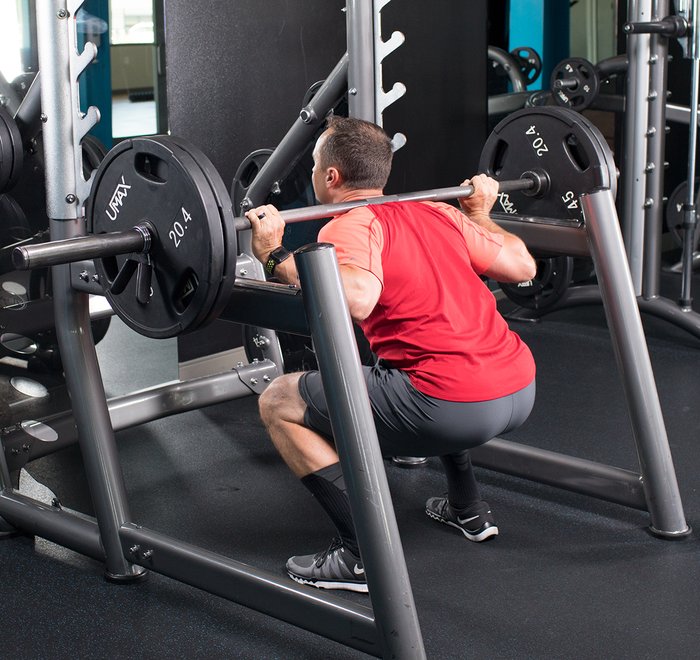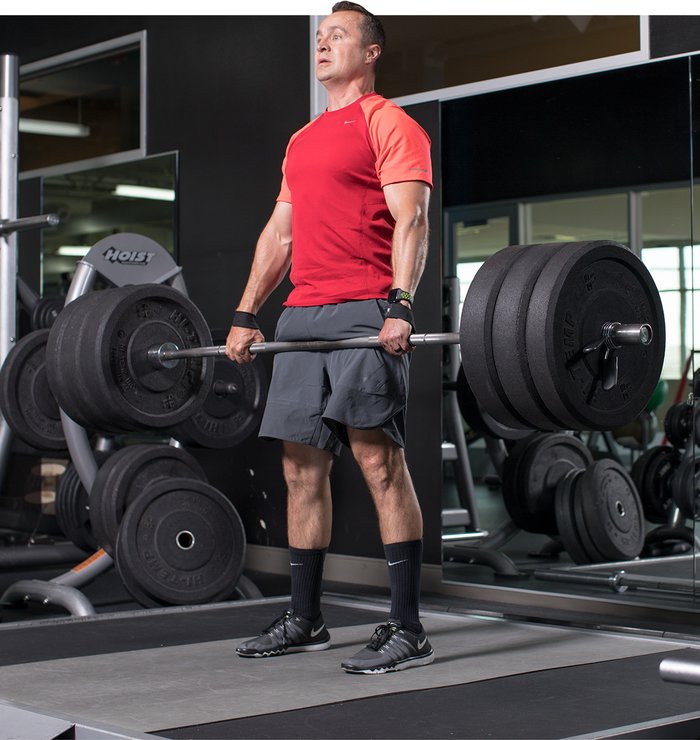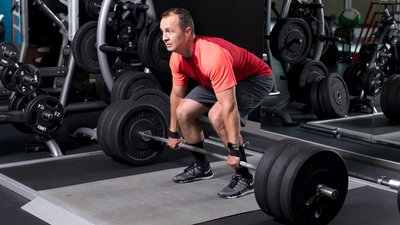Q: Is going heavy a young man's game?
I totally get the appeal of wanting to know, to the pound and to the rep, how strong you are. Yes, this type of strength matters, but it comes at a cost—mostly to your joints. In a matter of just a second or two, your flaws and weaknesses are exposed, and the quality of your training leading up to that moment is equally exposed.
The older you get, the more important it is to carefully consider the benefit-to-risk ratio of your training. That's why I'd say that going really heavy often, or going heavy with questionable technique is a…well, I was going to say a young man's game, but it's really not anyone's game, if you care about being healthy and functional in your later years.

That said, heavy lifting definitely can have a place in the training of older guys, given two important caveats:
- "Heavy" doesn't necessarily mean max singles. For maximum strength purposes, occasional forays into the 3-5 range, for 4-5 week cycles, is about as heavy as you'd ever need to go—unless you compete in powerlifting. Even then, you only need to flirt with the 1-3 rep range once or twice a year for peaking cycles before a meet.
- Only go heavy on lifts well suited to you. You should never go particularly heavy on a lift that is not well mastered, or with an exercise that isn't optimal for your body type, orthopedic history, or proportions. This observation should be obvious, but I often see older lifters with significant shoulder issues doing super-heavy, partial-range bench presses. These are guys who just can't let go of their former glory, but they pay a terrible price for a very questionable payoff, in my opinion.
I'm not by any means trying to discourage heavy lifting. After all, I regularly do the "Big Three" for low reps at age 58! But think about your goals, and where you want to be 10, 20, or even 30 years down the road. If you want to be reasonably strong, but your main objective to is to be muscular, lean, and healthy, the vast majority of your training can—and should—be in the 10-20 rep range.
This intensity bracket generates much higher training volumes, which not only stimulates the growth of new muscle, it also burns far more calories, increases work capacity, and spares your joints. And guess what? If you can lift more weight for 10 reps than you used to, that means you're stronger. No, the S-word isn't just for 5 reps and under.
A Matter of Time
Another important point that a lot of people miss is that high-rep training is much more time efficient than heavy, low-rep workouts. This may seem counterintuitive—after all, it's a fraction of the reps, right? But in action, it's far more than that.
Recently, Dr. Brad Schoenfeld performed a much-discussed study comparing the results of lifters who performed 3 sets of 10 reps against another group who lifted 7 sets of 3. Both groups trained for 8 weeks, and the volume was equated so that both groups lifted about the same amount of total weight per week.
Interestingly, both groups of lifters experienced very similar amounts of new muscle growth. I wasn't surprised by this, but what did catch me off guard were the responses I heard to the study in gyms. Plenty of lifters took this as a green light to start doing heavy triples for the purpose of muscle development! But let's take a moment and consider the relative time commitment involved with both types of workouts.

Picture yourself doing 7 heavy sets of 3 on the squat. I don't know how strong you are, but I think the most I could squat for 7x3 would be maybe 315. But that's after warm-up sets with 45, 95, 135, 185, 225, and 275—in other words, 6 sets before I even get to my 7 work sets! And I'm going to need maybe 4 minutes of rest between each work set. Bottom line, my squats are going to take at least an hour, and that's only one exercise.
However, if I imagine myself squatting 3 sets of 10, I'd probably use 225, which means only 4 warm-up sets, and maybe 3 minutes of rest between the 3 work sets. I could probably get that done in 35-40 minutes, which is a 33 percent time savings, and it also leaves me 20 minutes for other training before my hour is up.
How to Put It Into Action
Most of my older clients rotate between three different intensity zones in succession, in 4-week training blocks, usually built around 3-4 full-body workouts a week:
- Block 1 (4 Weeks): Work Capacity: Sets of 12-20 reps/set.
- Block 2 (4 Weeks): Hypertrophy: Sets of 8-12 reps/set.
- Block 3 (4 Weeks): Strength: Sets of 5-7 reps/set.
- Rinse & repeat
In this arrangement, each phase potentiates the results of the next. Your first phase builds up your ability to do lots of work, so when you shift to hypertrophy training, you'll be able to handle a higher training volume than you would have been able to do without the previous work capacity block. After four weeks of hypertrophy emphasis, your (now bigger) muscles will be able to handle greater training intensities than they would have been capable of otherwise.
Your exercise menus will also change significantly with each new training block, since some exercises are better suited for low-rep training and vice versa. For example, it doesn't make a lot of sense to do heavy sets of 5 on inline dumbbell bench presses, or to do sets of 15 on deadlifts. But if you're rotating between variations of the same basic movement patterns—hinge, lunge, push, pull, squat, and carry—you have plenty of choices at your disposal. You can see a couple of examples of how I program these movements in my article "Why Full-Body Workouts Make You Stronger."

Periodic exercise rotation has a number of other benefits, though. It helps to prevent overuse injuries (which is why lack of variety was on my list of "7 Ways You're a Serious Workout Injury Waiting to Happen") as well as psychological boredom.
The older we get, the more both of those things matter. You want to be excited about your training, not dreading it…or constantly getting sidelined by tweaks big and small.
Questions? Comments? Ideas for this column? Let's continue the discussion in the comments section.

